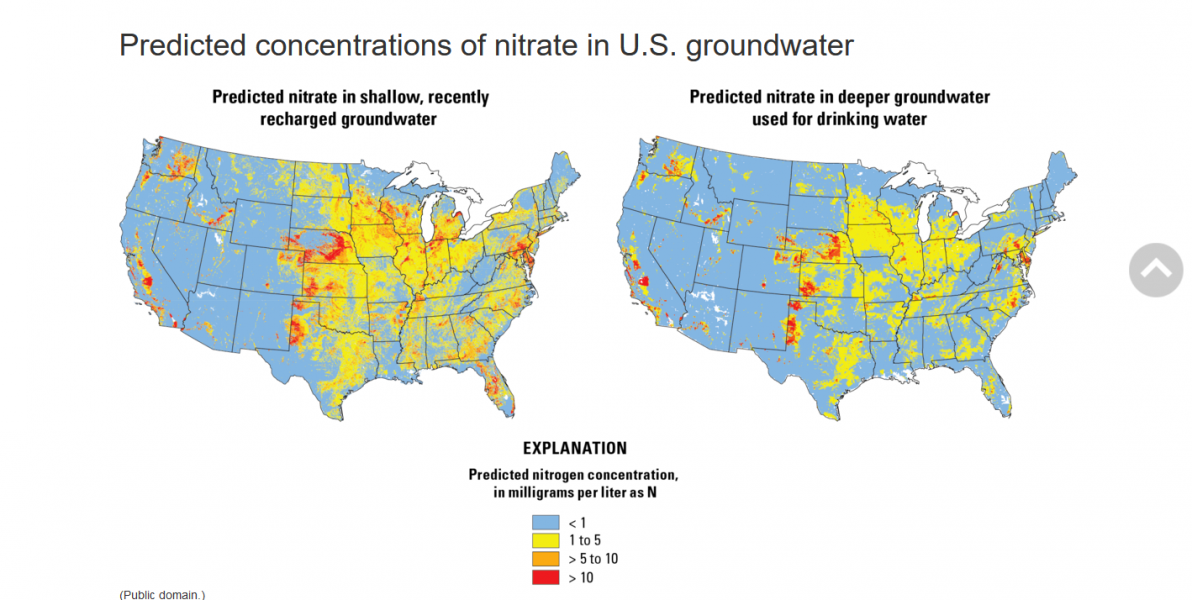Scientist Tests Whether Algae Could Help Clean Up Water Polluted By Midwest Farm Runoff
Published on by Water Network Research, Official research team of The Water Network in Academic

University of Nebraska-Lincoln’s Innovation Campus, Paul Black shows off what look like a series of water-filled glass hamster tubes in brilliant red, fuchsia, and green hues.
“What we’re testing here is wavelength… we’re testing a combination of red light, blue light, blue and red together, and then plain white light. What we’re trying to do is maximize growth,” Black explained.
What Black is growing is algae -- the slimy green stuff that grows in ponds, fed by runoff of nitrogen fertilizer from farm fields and other sources.
Black chairs UNL’s Biochemistry Department and is a founding member of a company called Vestal W20, which is trying to use algae to remove excess nitrates out of water.
“What’s happened over the hundred-plus years of putting nitrogen fertilizer on our fields is that the 40-50 percent of the nitrogen that was not taken up by the plants now ultimately leaches down into the groundwater,” he said.
Too much nitrate in the water can cause problems like difficulty conceiving in humans and other animals, and methemoglobinemia -- blue baby syndrome -- a treatable condition where red blood cells don’t carry enough oxygen to young bodies. The Environmental Protection Agency has set a limit on nitrates in drinking water of 10 parts per million.
Estimated levels of nitrate pollution across the United States show concentrations in areas with heavy agricultural production.
CREDIT U.S. GEOLOGICAL SURVEY
Black said passing nitrate-polluted water through algae and adding carbon dioxide under the right lighting for photosynthesis can solve the problem.
“We can start out with 100 parts per million or 200 parts per million of nitrate, and over a four-to-five day period, we can bring it down to less than one,” Black said.
What’s more, the algae can then produce oil, which could be used as an alternative fuel, and other biomass, which could be ground up and used as fertilizer.
Black has been experimenting with this process for almost 10 years. So far, it’s been at laboratory scale – first with a tenth of a liter of water, now up to 500 liters. But starting next spring, the experiment will move to thousands of liters at a time. The company has signed an agreement with the city of Hickman, just south of Lincoln, to build a greenhouse and process water from a well where the water exceeds EPA limits and contains 27 parts per million of nitrates.
Hickman City Administrator Silas Clarke said the city no longer uses that well.
“We actually have four other wells. We have two shallow wells that sit around 5 parts per million on nitrates – again, the top level being 10 parts per million. And then we have two deeper wells and those wells do not have any nitrates in them. But then again the water sat on the rock for so long that it’s been picking up iron and manganese, which causes discoloration issues and some other issues. And so Hickman has actually put in a removal system for iron and manganese,” Clarke said.
Clarke said it would help municipalities like Hickman if Vestal’s technology works.
“If we could get to a point of putting this well back in service, we know there’s good water under there. But it is in fact high in nitrates. So I think it could be good for the city of Hickman and it could be good for the municipal water supplies across the state,” he said.
Media
Taxonomy
- Algae
- Stormwater Runoff
2 Comments
-
Like your approach
-
Would like a summary of the effects of wavelengths you've tested. Interesting research. Sounds quite amenable to scale-up.
